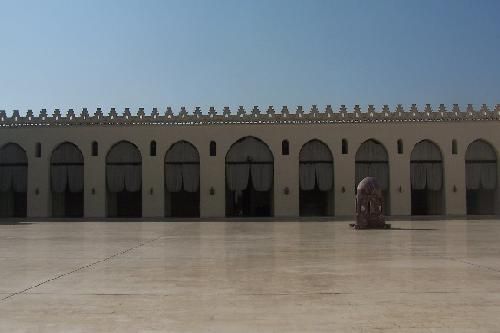
The construction of this building was initiated by El-Aziz Bi-Allah who was the father of El-Hakim Bi-Amr Allah who completed its construction. El-Hakim was known as a tyrant and dictator ruler who forbidden eating certain things like Molukhiya and prevented the shoemakers from making women shoes and many other tyrannical things. He was fascinated with roaming around the city at night and he died in mysterious conditions in the area of El Muqattam and his body was not found. The Fatimid style of decoration appears clearly in the porch of the façade and th e two stone Minarets on its either sides that were supported with trapezoidal bases.
e two stone Minarets on its either sides that were supported with trapezoidal bases.
These Minarets were restored after 1303 earthquake by Baybars II or El-Gashankir who added the beautiful casings with rubbles and the Mabkhara to them. One of the worth noticing features in the interior plan of the mosque is that the central aisle is higher than the side aisles surrounding it. The Mihrab of the mosque is handsomely ornamented with marble carvings and gleaming gilt and the ceiling is supported with pier supports. Next to the Mihrab, one can see the beautiful niche with wooden tie- beams that was presented to the mosque by Omar Makram.

